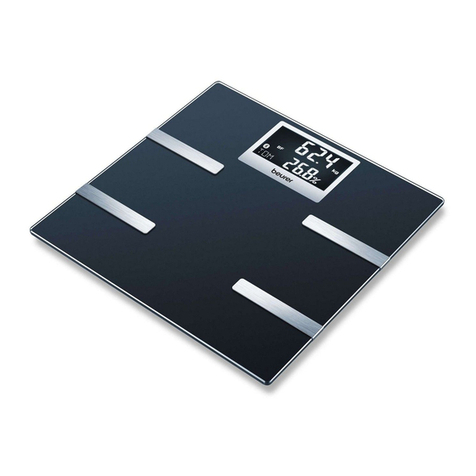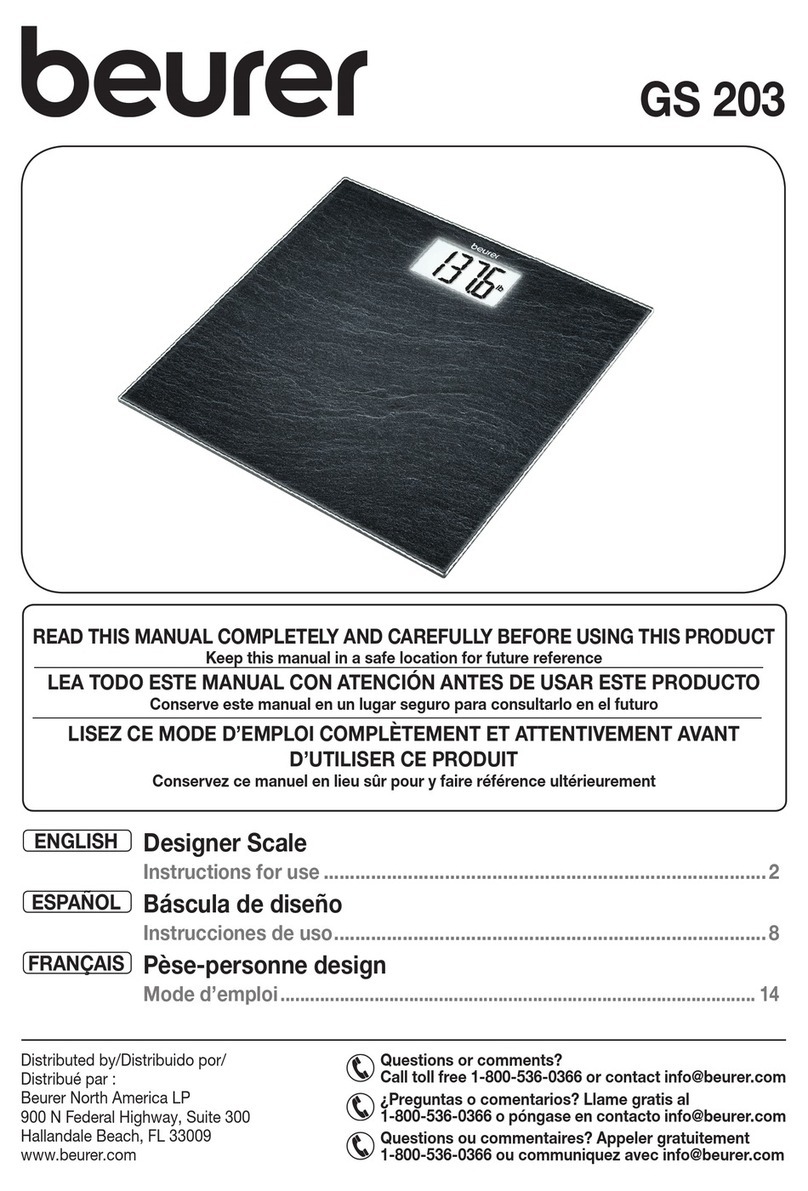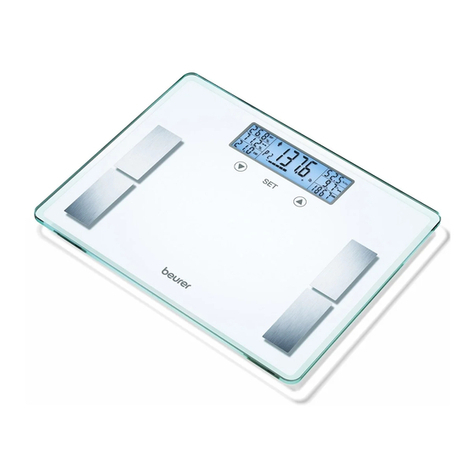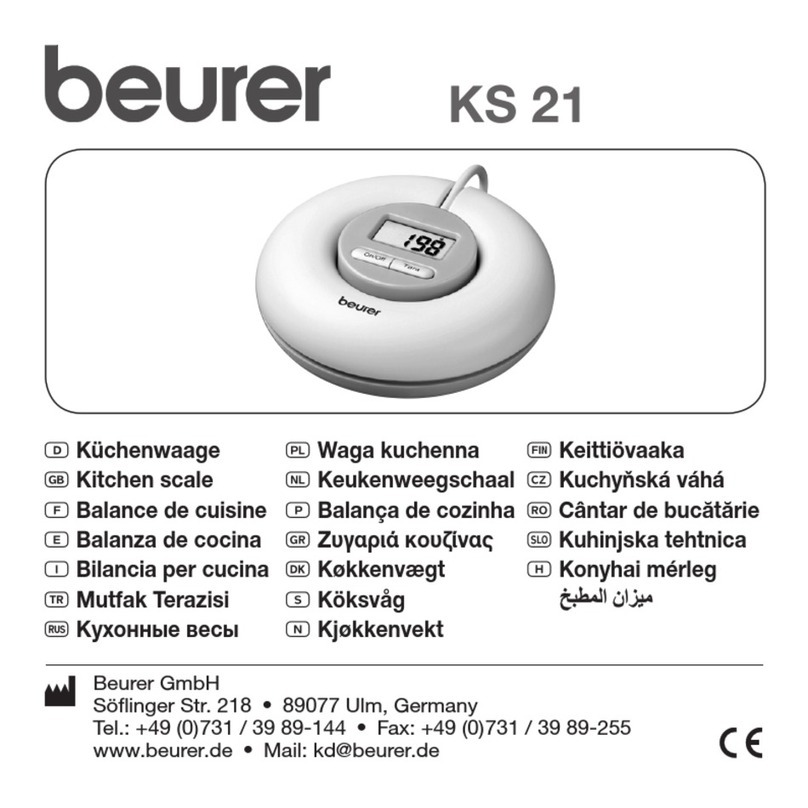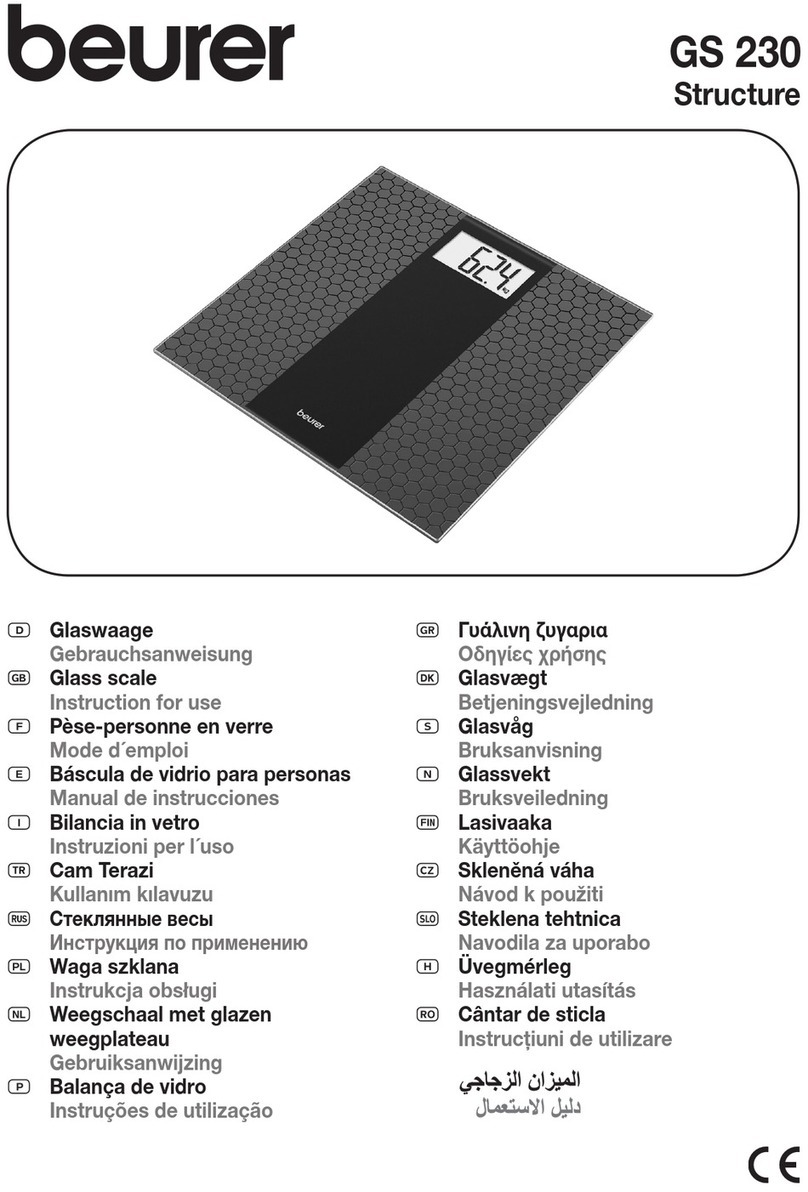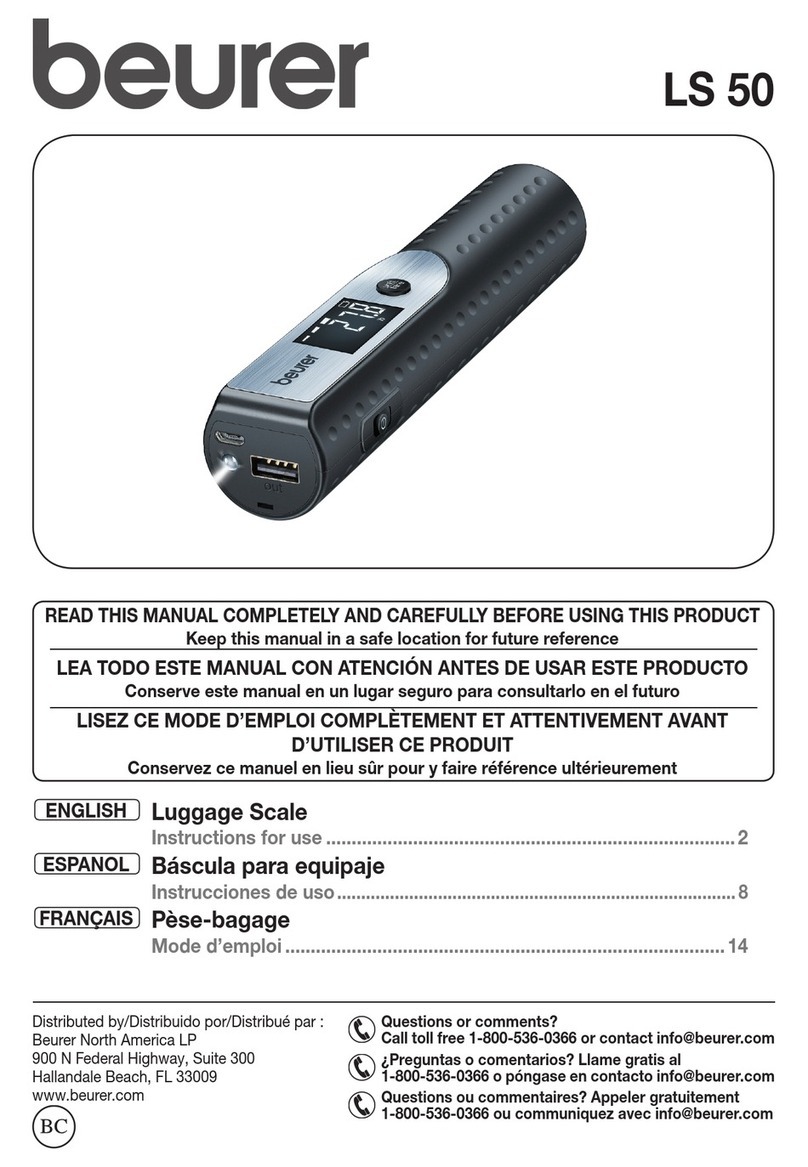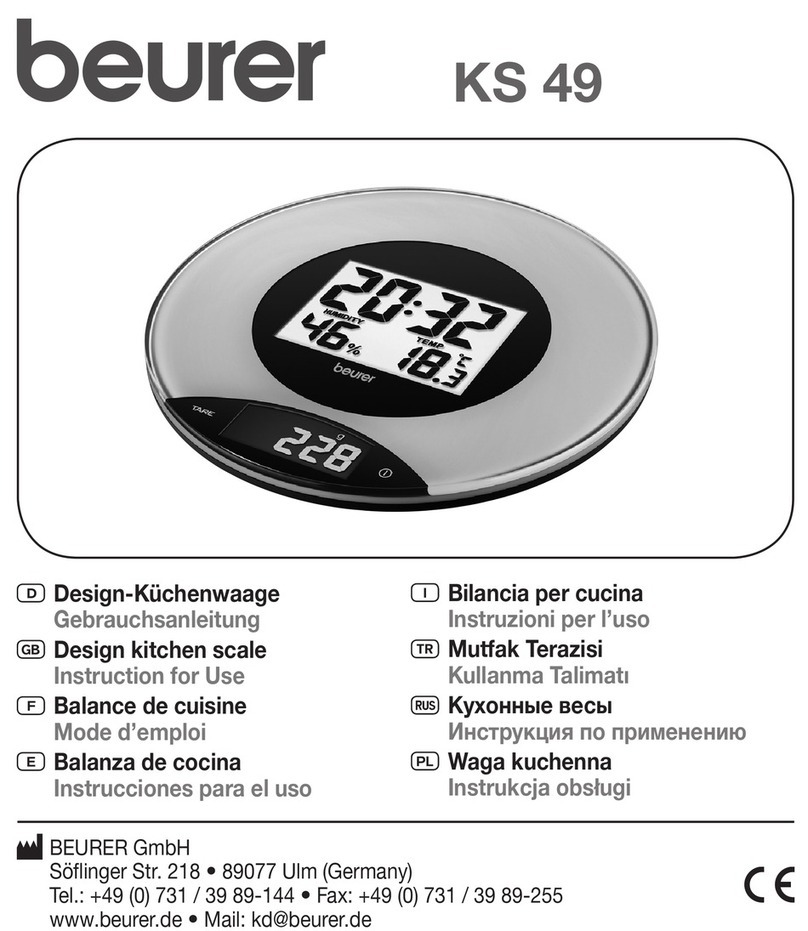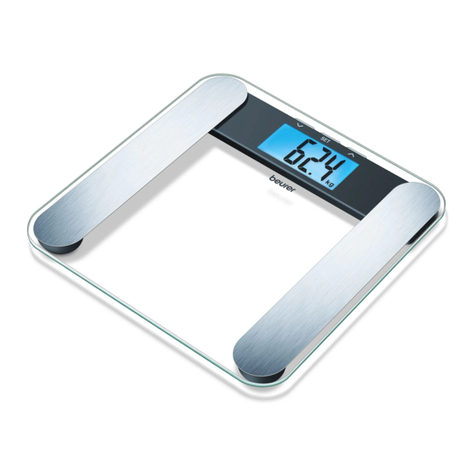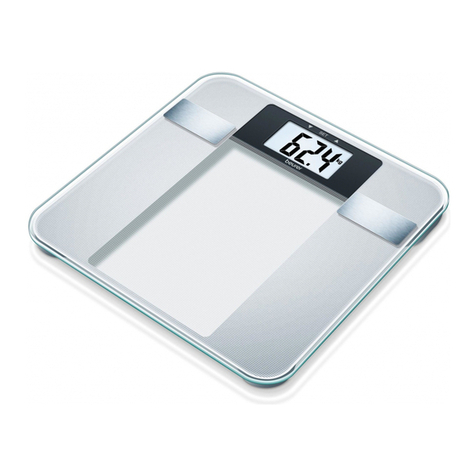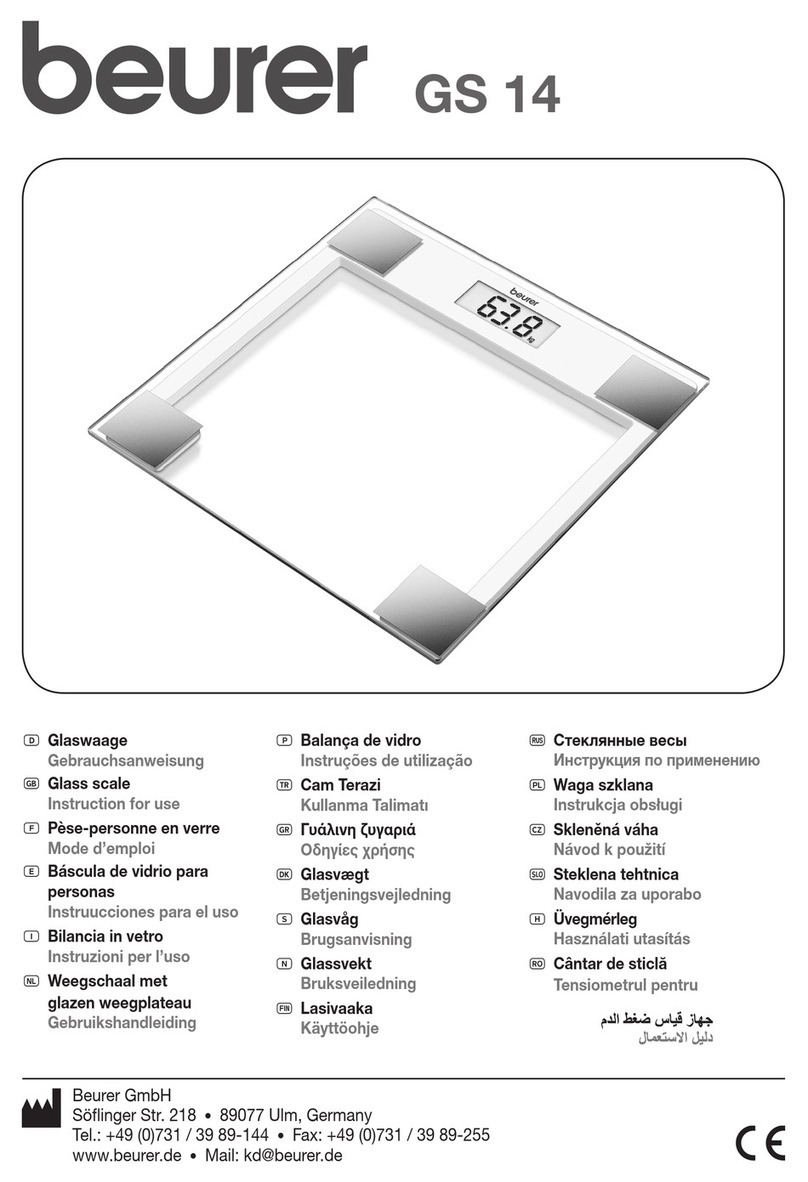Bone
mass
Like the rest
of
our body, our bones are subject
to
the natural development, degeneration and ageing
pro-
cesses. Bone mass increases rapidly
in
childhood and reaches
its
maximum between 30 and 40 years
of
age. Bone mass reduces slightly with increasing age. You can reduce this degeneration somewhat
w ith
healthy nutrition (particularly calcium and vitamin D) and regular
exercise.
With appropriate muscle building, you can also strengthen your bone structure. Note that this scale
w ill
not show you the calcium content
of
your bones, but will measure the weight
of
all bone
constituents
(organic substances, inorganic substances and water). Little influence can be exerted on bone mass,
but
it
will vary slightly within the influencing factors (weight, height, age, gender). no recognised guidelines
or
recommendations relating
to
bone mass
measurement.
Attention:
Please
do
not confuse bone mass with bone density.
Bone density can be determined only
by
means
of a
medical examination (e.g. computer
tomogra-
phy, ultrasound).
It is
therefore not possible
to
draw conclusions concerning changes
to
the
bones
and bone hardness (e.g. osteoporosis) using this
scale.
BMR
The basal metabolic rate (BMR)is the amount
of
energy required by the body at complete rest
to
maintain
its
basic functions (e.g. while lying in bed for 24 hours). This value largely depends on weight, height and
age.
It
is displayed on the diagnostic scale in kcal/day units using the scientifically recognizedHarris-Benedict
formula.
Your body requires this amount
of
energy
in
any case and
it
must be reintroduced into your body
inthe
form
of
nutrition.
If
you take on less energy over the longer term, this can be harmful
to
your
health.
A
MR
The active metabolic rate (AMR)
is
the amount
of
energy required daily
by
the body
inits
active state.
The
energy consumption
of a
human being rises with increasing physical activity and
is
measured on the
diag-
nostic scale
in
relation
to
the degree
of
activity entered (1–
5).
To maintain your existing weight, the amount
of
energyused must be reintroduced into the body
in the
form
of
food and drink.
If
less energy
is
introduced than
is
used over
a
longer period
of
time, your body
w ill
obtain the difference largely from the amount
of fat
stored and your weight will decrease. If, on the
other
hand, over
a
longer period
of
time more energy
is
introduced than the total active metabolic rate
(AMR)
calculated, your body will be unable
to
burn
off
the excess energy, and the excess will be stored
in
the body
as
fat
and your weight will
increase.
r
esults
in relation
to time
Remember that only long-term trends are important. Short-term fluctuations
in
weight over
afew
days are usually the result
of a
loss
of fluid.
The interpretation of the results will depend on changes in your overall weight and body fat, body water
and
muscle percentages, as well as on the period during which these changes take place. Sudden changes within
days must be distinguished from medium term changes (over weeks)and long term changes
(months).
A basic rule
is
that short term changes
in
weight almost exclusively represent changes
in
water
content,
whereas medium and long term changes may also involve the
fat
and muscle
percentages.
•
If
your weight reduces over the short term, but your body
fat
percentage increases
or
remains the
same,
you have merely lost water – e.g. after
a
training session, sauna session
or a
diet restricted only
to rapid
weight
loss.
•
If
your weight increases over the medium term and the body
fat
percentage falls
or
stays the same,
then
you could have built up valuable muscle
mass.
•
If
your weight and body
fat
percentage fall simultaneously then your diet
is
working – you are losing
fat
mass.
•
Ideally you should support your diet with physical activity, fitness
or
power training.
This way you can increase your muscle percentage over the medium
ter m.
•
Body fat, body water
or
muscle percentages should not be added (certain elements
of
muscle
tissue
also contain body
water).
8





